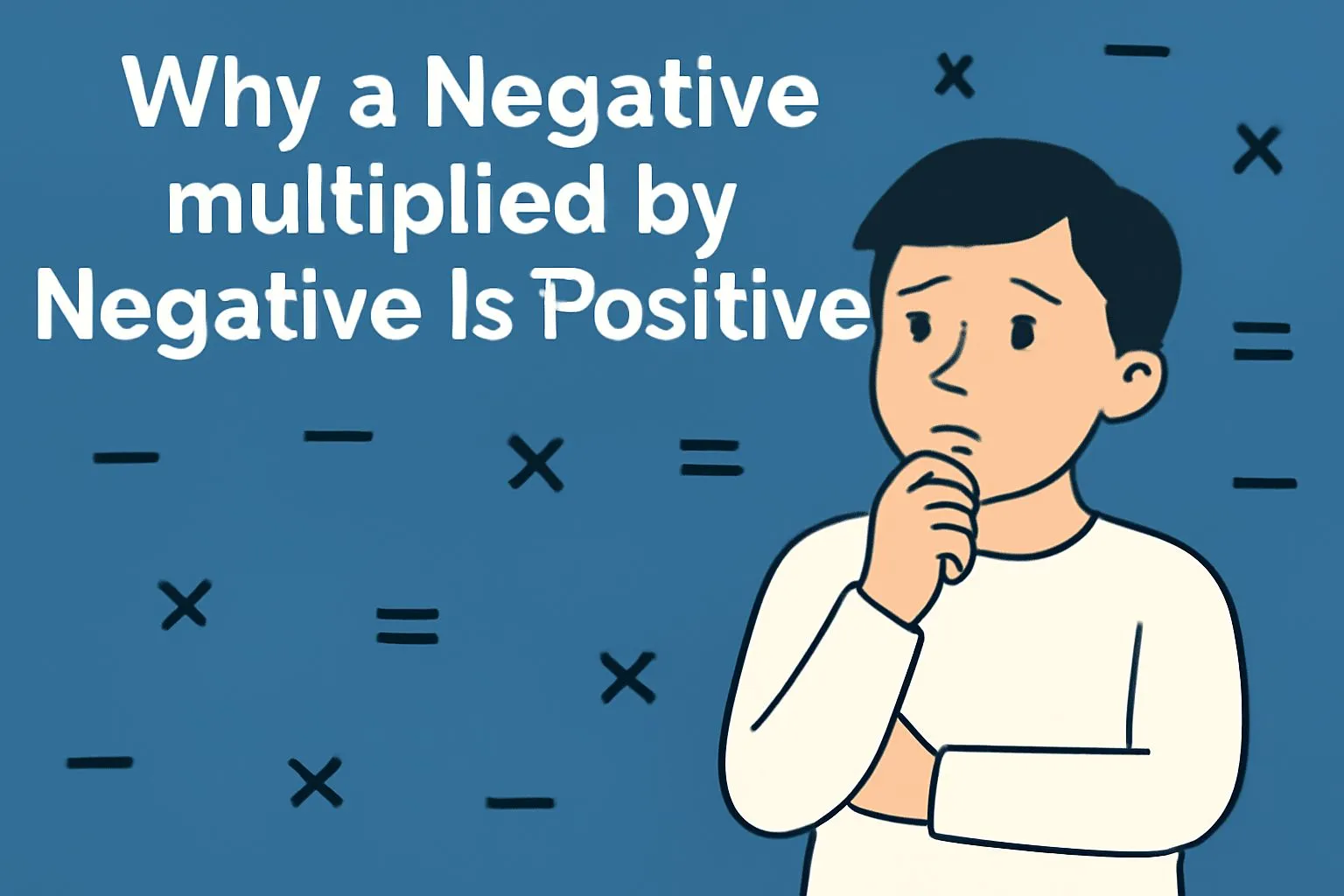Have you ever been handed the rule “a negative times a negative is a positive” and accepted it as one of those math facts you just have to memorize? You are not alone. It does sound arbitrary until someone shows you a simple way to picture it—and then it clicks.
Below are three ways to understand the rule: a number-line walk, a real-world “debt” analogy, and a short algebraic consistency proof. Pick the one that makes the most sense to you.
1) The number-line walk (visual and immediate)
Picture a number line. Right is positive, left is negative. Multiplication by a number tells you two things: which direction you face and how many steps you take.
Let’s track four examples the way you would walk them:
• 2 × 3: Face the positive side (because 2 is positive) and walk forward 3 steps ⇒ you reach +6.
• (−2) × 3: Face the negative side (because −2 is negative) and walk forward 3 steps ⇒ you reach −6.
• 2 × (−3): Face the positive side (2) but walk backward 3 steps (−3) ⇒ you reach −6. • (−2) × (−3): Face the negative side (−2) and walk backward 3 steps (−3) ⇒ you land at +6.
So a negative direction plus a negative movement cancels out—you end up on the positive side. Simple, visual, and hard to forget.
2) Debt of a debt (a real-world metaphor)
Suppose “owing money” is negative and “having money” is positive.
• If someone owes you $3 (that’s +3 for you), and you do that twice, you get +6.
• If someone owes you twice the debt of $3 (that’s −2 × 3), you’re facing the negative direction and taking three steps forward twice: net −6 (you are more in debt).
• Now imagine you owe someone else twice (−2) the debt of owing $3 (−3). A debt of a debt is effectively a gain—the double negative becomes a positive: −2 × −3 = +6.
In short: “owing of owing” cancels—two negatives make a positive. It becomes intuitive once you map numbers to something concrete like money.
3) A short algebraic consistency argument
This is less visual but shows why arithmetic would break if the rule were different. Start with something we accept: 0 = 0, and for any numbers a, b:
0 = b + (−b).
Multiply both sides by −a:
(−a) · 0 = (−a) · (b + (−b)).
The left side is 0, so
0 = (−a)b + (−a)(−b).
Blog Collection 4
From distributivity we also have
0 = (a + (−a))b = ab + (−a)b ⇒ (−a)b = −ab.
Substitute that into the earlier line:
0 = −ab + (−a)(−b) ⇒ (−a)(−b) = ab.
Thus, to keep arithmetic consistent (distributivity and additive inverses), multiplying two negatives must yield the positive product.
Wrap-up
• Use the number-line walk if you want a quick visual intuition.
• Use the debt metaphor when you want a real-world feel.
• Use the algebraic argument when you need a formal reason that ties into fundamental arithmetic laws.
All three agree: a negative times a negative is positive—not because someone decided so arbitrarily, but because that rule preserves the logical structure and usefulness of multiplication.
— Taral Shah – Founder of Career Space





